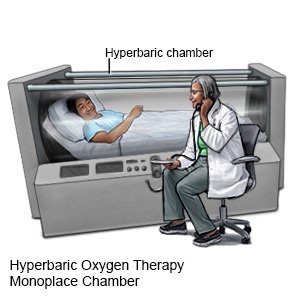Compartment Syndrome
Medically reviewed by Drugs.com. Last updated on Apr 6, 2025.
Compartment syndrome happens when swelling or bleeding increases pressure in and between muscles. This stops blood from flowing to the area and causes muscle and nerve damage. Compartment syndrome usually happens in an arm or leg. Symptoms start suddenly and get worse quickly. Without immediate treatment, damage may become severe and permanent.
WHILE YOU ARE HERE:
Informed consent
is a legal document that explains the tests, treatments, or procedures that you may need. Informed consent means you understand what will be done and can make decisions about what you want. You give your permission when you sign the consent form. You can have someone sign this form for you if you are not able to sign it. You have the right to understand your medical care in words you know. Before you sign the consent form, understand the risks and benefits of what will be done. Make sure all your questions are answered.
Activity:
At first you may need to rest in bed. Healthcare providers may help you elevate your arm or leg at the level of your heart. Your healthcare provider will tell you when it is okay to get out of bed. Call your healthcare provider before you get up for the first time. If you ever feel weak or dizzy, sit or lie down right away.
Medicines:
- Diuretics help decrease swelling and edema (excess fluid). It is often called water pills. You may urinate more often when you take this medicine.
- Pain medicine may be given. Do not wait until the pain is severe before you take your medicine.
Tests:
- Compartment pressure measurement is used to check the pressure in the area you are having pain.
- Doppler ultrasound checks blood flow in the injured area.
- MRI pictures are used to check for injury to deeper tissues. You may be given contrast liquid to help the injury show up better in the pictures. Tell the healthcare provider if you have ever had an allergic reaction to contrast liquid. Do not enter the MRI room with anything metal. Metal can cause serious injury. Tell the healthcare provider if you have any metal in or on your body.
- Scintigraphy is used to check how blood flows through your arm or leg. You are given a small amount of contrast liquid in an IV. Pictures are then taken of your blood vessels, muscles, or bones.
Treatment:
- Physical therapy can help you with your recovery. A physical therapist will teach you exercises to help improve movement and strength. Physical therapy can also help decrease pain and loss of function.
- Hyperbaric oxygen therapy is used to get more oxygen into your body. The oxygen is given under pressure to help it get into your tissues and blood. You may need to have this therapy more than 1 time.

- Surgery may be used to decrease pain, pressure, and swelling. Your healthcare provider will make an incision into your injured arm or leg.
RISKS:
Your muscles and nerves may have permanent damage if treatment is delayed. You may have weakness or difficulty moving your arm or leg. You may need to have all or part of the injured arm or leg removed. You may develop heart problems or kidney damage as a result of compartment syndrome.
CARE AGREEMENT:
You have the right to help plan your care. Learn about your health condition and how it may be treated. Discuss treatment options with your healthcare providers to decide what care you want to receive. You always have the right to refuse treatment.© Copyright Merative 2025 Information is for End User's use only and may not be sold, redistributed or otherwise used for commercial purposes.
The above information is an educational aid only. It is not intended as medical advice for individual conditions or treatments. Talk to your doctor, nurse or pharmacist before following any medical regimen to see if it is safe and effective for you.
Learn more about Compartment Syndrome
Care guides
Further information
Always consult your healthcare provider to ensure the information displayed on this page applies to your personal circumstances.
